 | « Back to article | Print this article |
Wide, 4 lane expressways have taken the pleasures out of seeing life along the roads like the highways of old -- homes, bazaars, dhabas, women filling water, elderly folk sitting under the peepal tree...
True Indian scenes most often lie on less travelled routes, along roads that have fallen off the map, after modern highways have come up.
On the fourth leg of their 2,148 km journey, Rediff.com's Archana Masih and photographer Rajesh Karkera discover one such forgotten place in the Thar Desert.
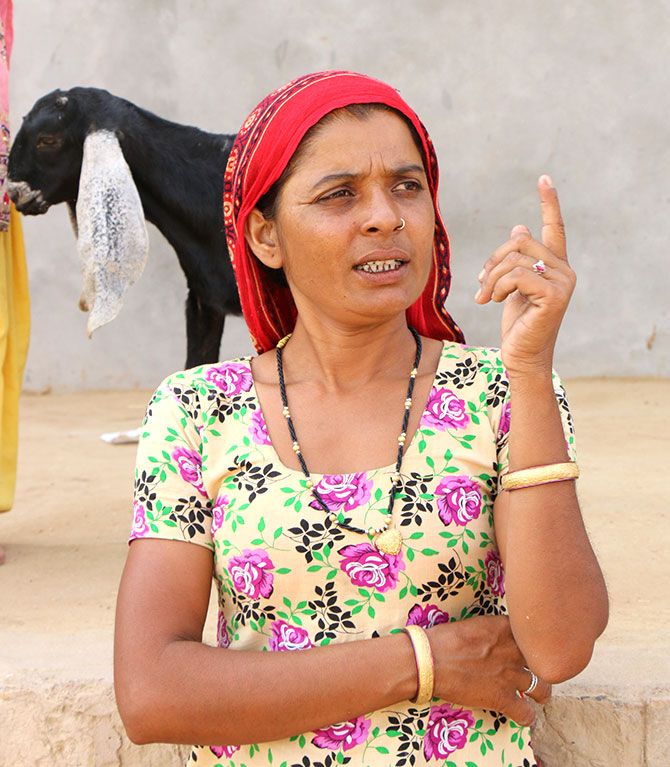
Day 4: The Thar Desert, Rajasthan
It is 42 degrees, but it seems like 45 and the soot-covered ceiling fans at the Midway Dhaba in Birdhwal, Rajasthan, are taken by truckers snoozing on cots.
We had driven out of Bathinda with hopes of having alu, gobi, paneer parathas with lassi at some inviting dhaba, but such culinary encounters elude us.
One sad discovery of our travel is that the dhabas of old are gradually disappearing or have given way to more modern eateries.
You can find tea shacks, but not dhabas open for an early breakfast. "A McDonald's on the Mumbai-Pune expressway opens at 7 am, but not dhabas here," laughs Rajesh, my colleague.
In Gujarat, the highway restaurants get fancier. These are large enterprises that provide rooms to stay, with a Havmor ice cream parlour and confectionary shops selling foreign goods.
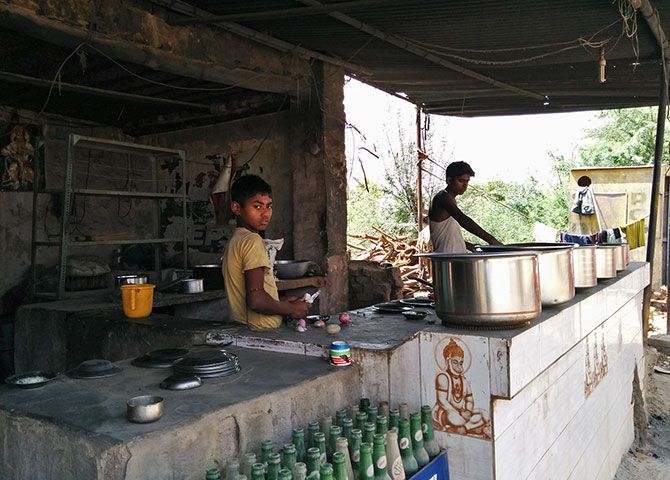
The most delicious breakfast of the trip we have is outside the Nokha Mandi station in Bikaner district -- but that is on the next day. Fresh, fat mirchi pakodas and kachoris wrapped in newspaper with two cups of hot tea.
Rs 40 for two mirchi pakodas and two kachoris; Rs 5 for a thimble-sized tea cup.
The previous day, at the Midway dhaba on the Punjab-Rajasthan border, when we ask what is on offer, the cook gruffly tells us, "The menu is hanging there, read it."
Most of the items on the list aren't available. The oily food is served with green chillies and two fat bars of lard, brought by Chowmein, a young Nepali boy in shorts and t-shirt.
His colleague is called Burger. The boys traveled from Nepal after the April 25, 2015 earthquake to earn a living and plan to return home after a year-and-a-half.
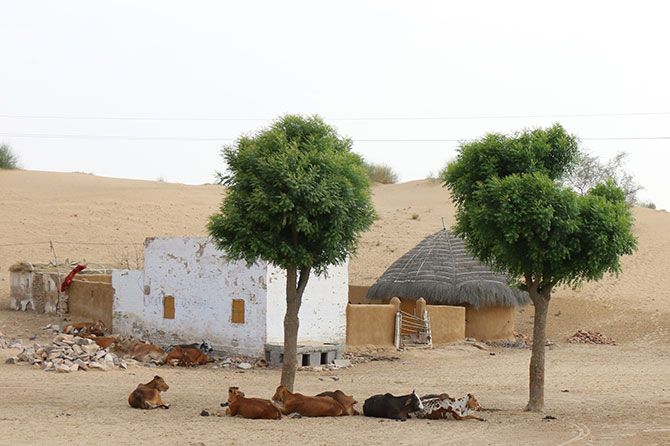
After a very forgettable meal, we set course on a quieter route to Bikaner via Chhattargarh, cutting through the great Thar desert. The vast mounds of sand smoulder under the merciless sun, yet look gloriously beautiful.
Sharing space with us on the deserted road are sundry camel carts and army convoys.
We are somewhere near the area where the Indian Army, especially the armoured forces, conduct training manoeuvres. Most units come here for annual firing and training which keeps this stretch milling with tank transporters and hordes of army men in camouflage gear.
On the right, beyond the sand dunes and the Indira Gandhi Canal, lies Pakistan. The road, partly constructed by the Border Roads Organisation, is strong enough for tanks to roll on during war time and the proof is there to see.

An army convoy with tanks and huge guns makes its way, giving us a glimpse of the mechanised infantry. A train station goes by, where a goods train with flat wagons are being loaded with tanks, instantly reminding me of what Zarine Boyce, the daughter of 1965 war hero Colonel A B Tarapore, Param Vir Chakra, had told me last year.
The last time she had seen her father, he had left on a tank being carried on a train like that. She never saw him again; he was martyred in the 1965 war. I had seen Colonel Tarapore's statue at the entrance of the Bathinda cantonment the previous day.
In another square in the state, I see the statue of another Param Vir Chakra hero and Jodhpur native Major Shaitan Singh, who died along with 114 soldiers, fighting to the last man, repelling the Chinese in Ladakh in 1962.
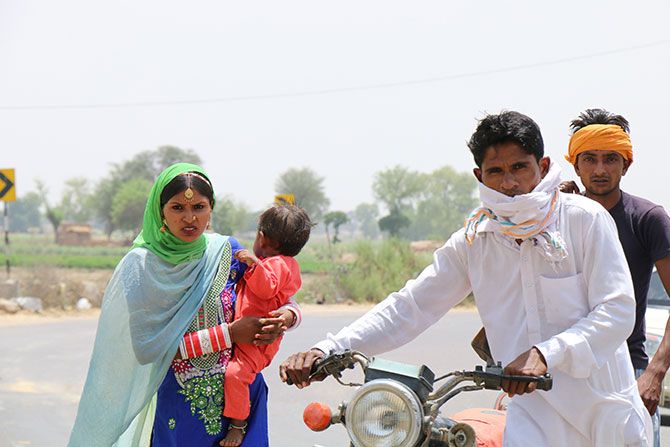
Beyond the tanks, armoured vehicles and memories of heroes, we see something we haven't seen before -- camel carts on wheels made of aeroplane tyres!
The tyres are sturdy in the difficult desert terrain, allowing easy traction with least resistance and are bought from traders dealing with second-hand jet tyres.
According to a report on downtoearth.org, a one-humped camel can cover 32 km in 8 hours with a 180 kg load and more than 900 kg on the cart with jet tyres.

One area where India has seen real change is on the highways. The wide 2-4 lanes certainly give a smooth ride, but have taken the pleasures out of seeing life along the roads like the highways of old -- homes, bazaars, women filling water, elderly folk sitting under the peepal tree, children running out of a school...
True Indian vignettes most often lie on these less travelled routes, along roads that have fallen off the map after better, modern ones came up.
The road we are on is somewhat like that, where after long expanses of the desert we see little hamlets, shepherds with herds and tractors carrying mountains of cattle feed.
After looking for a place to have tea for a long time, we stop at a small thatched tea shop at a road junction in Kela Phata, a place that is hard to find on the map.
Behind the counter which stocks beedis, biscuits and chips of popular brands stands Khansaab, an old man brewing tea in his shop-cum-home. The house has thick mud walls and is cool to touch while the desert blazes outside.
Much against his wishes, he has to be persuaded to add more water and less milk. "Special special tea is made only with pure milk," he says.
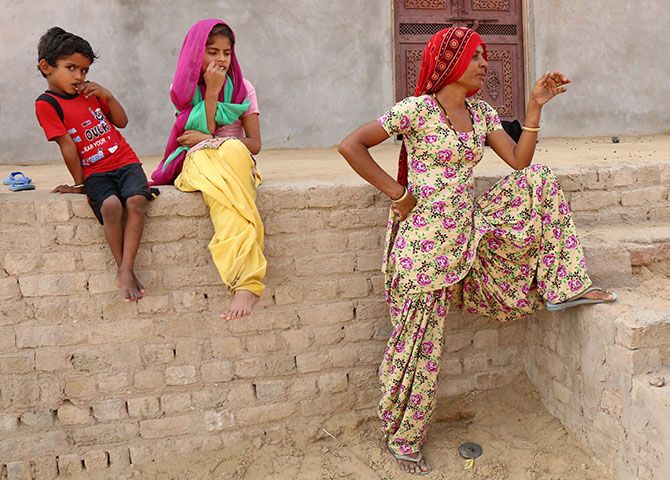
Kela Phata is 50 odds kilometres from Bikaner. On a water tap opposite the tea shop are Shaheen and Asma whom we met as Khansaab makes tea. Their beautiful faces remind me of Steve McCurry's famous National Geographic cover photograph of an Afghan girl.
The girls attend a private school which costs the family an annual fee of Rs 12,000 and Rs 4,000 in transport. The children of a daily wager, their mother tells us the nearest government school is too far.
Biba Khatoon, their neighbour, who makes a living selling cow milk at Rs 25 a litre, says no girl in the village has been to college.
"Neither has any neta ever come to speak to us women," says Biba, a single woman who lives with her father.
The women speak loudly and confidently. They wear beautiful Rajasthani ghagras with bright dupattas and it is a joy to see them in their native garments in an India that is losing the diversity of its dress culture.
They soon ask us as many questions about our lives as we do about theirs. Children, elders and younger women come and join in, as we set aside the distances of miles and minds to talk and laugh.
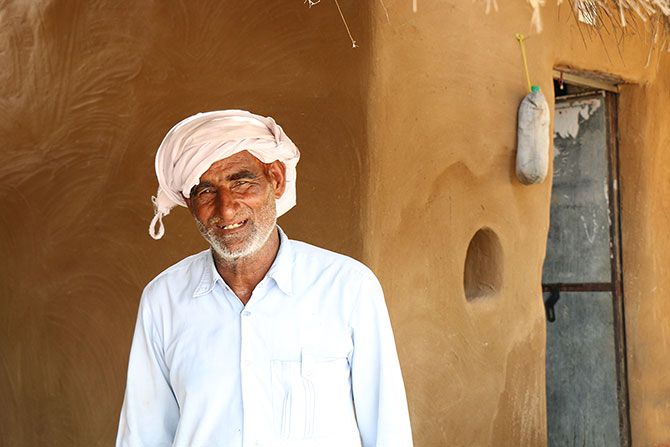
Meanwhile, Nathuram from the next village has stopped outside the tea shop to re-fit his moped's tyre. A friend who borrowed one of his tyres to go to a friend's wedding has returned it after attending the ceremony. As we sip tea, he tells us his peeve about not getting his widower's pension in three months.
"When there are no jobs for the educated, you can imagine what is the plight of the uneducated. And most are uneducated here," says Rahim Khan, a former sarpanch, sitting with his granddaughters on a charpoy.
The men point to a man on a motorcycle fastening plastic milk cans on his carrier. The milk is being taken to dairies in Bikaner for which villagers are paid Rs 25 per litre.
In Mumbai, a one litre packet costs almost double, Rs 40.
"What we sell is pure milk, unlike what you get in cities," laughs Rahim chacha.
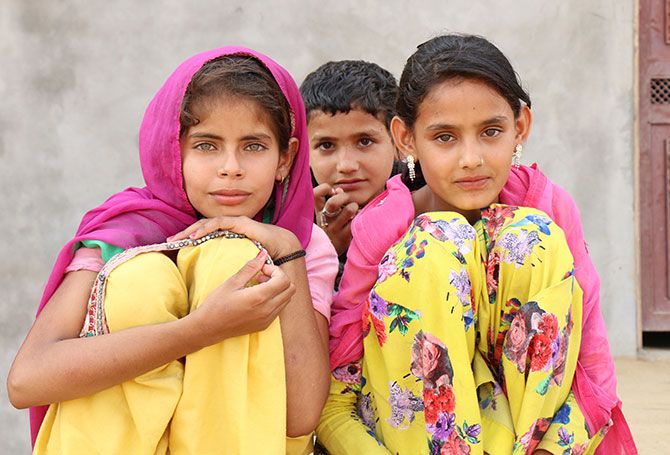
As we prepare to head to Bikaner, Rajesh asks the women for their address so that he can post them their photographs. The women say they don't know how to write. He then turns to the two school-going girls attending Class 4 and 5. They laugh shyly and say they can't write either.
I am not sure if Shaheen and Asma refuse to write because they are shy or really don't know how to write. We cajole them, but they just smile their beautiful smiles and refuse.
A report conducted by the education NGO Pratham last year revealed that almost 50 per cent of rural school children in Class 5 could not read textbooks meant for Class 2. Five percent couldn't even recognise letters.
India has managed to send almost 96 per cent children to school, but hasn't been able to provide a proper education to all. Each year, city children make the news with mind-blowing high percentages when Class 10 and 12 results are announced.
As long as children can't write, read, add, subtract we will continue to lose a battle in a classroom everyday. And I hope Shaheen and Asma were only being shy that afternoon.